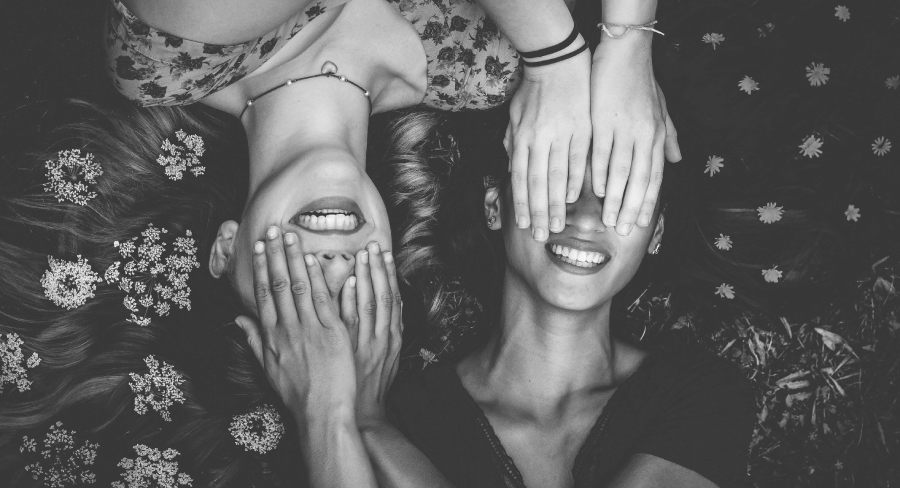Migraine, My Dear Best Friend
BLOGGING AWAY
Migraine, My Dear Best Friend
17.02.2025


Migraine is my dear best friend.
I can say this easily now because I no longer suffer from chronic migraines. This is both the story of my past and my current liberation. In the fall of 2022, after weeks of deep meditation through Body Integration, I accidentally healed from chronic migraines.
Once in a while, a migraine still reappears—just to keep me in practice and remind me where I come from. I am grateful for my migraines because, thanks to them, I discovered myself and my life’s mission.
Still, let’s be real—migraine is pain.
So, when it comes, it looks annoying at first—just like I may seem to my best friend when I keep pushing her toward self-growth. Ultimately, migraine is the voice of my inner truth having my best interest at heart.
Migraine is a bridge between my mind, my body, and my inner self. When I drift away from my true nature, it pulls me back, whispering: Come home.
When Migraine Knocks at My Door: From Resistance to Active Acceptance
I’ve learned the hard way that when migraine comes, everything else in my life drops. I still struggle to let go of my agenda and my to-do list. Something in me whispers, soldier on.
But migraine doesn’t negotiate, I have no choice but to be present with myself, or the pain will get worst. At that moment, I face a decision.
I can resist—complain, twist and turn, suffer, and wish the pain away.
Or, I can choose something else.
For over 20 years, I resisted. I wished I weren’t alive during migraine attacks that sometimes lasted two or three days. Today, I found a better way.
I tell myself: I take on the challenge. Thank you, migraine. I don’t judge. I don’t react. I approach it like an experimental scientist because pain is just a body sensation—my field of study. A part of me is even excited.
This isn’t blind optimism; it’s grounded in experience. I’ve observed pain enough to know it doesn’t exist on its own. Pain is a communication mechanism between the subconscious and conscious mind. It’s the body’s way of saying: Pay attention. Something is happening in your energy system. You are slipping away from yourself.
Body Integration: Facing Pain with Awareness
The truth is, Body Integration is tough. It requires complete mental presence.
Most of the time, I don’t want to do it since I’m in pain. It feels counter-intuitive to survival because it forces me not just to face pain but to dive into it. It’s the most uncomfortable practice I know.
So I wait. Until I either feel ready or have no other choice.
There is one rule I no longer break: I don’t take medicine. I know what this is about, I can stay with the pain and observe it. By objectifying the pain instead of reacting to it, I am able to sit with it.
I’ve seen this work hundreds of times. Each time, I am in awe. Pain dissolves, and what’s left is clarity. Lightness.
Body Integration requires meeting pain directly—diving into it, studying its sensations, and observing its subtle, shifting nature. Observing the body, I understood that we are energy. Through concentration, I surrender to the sensation, allowing myself to feel the anatomy of pain within the body.
The Process of Integration
Here’s how I do it.
I go straight to the center of the pain. I try to pierce through it—over and over. My mind wanders, loses focus, but I bring myself back.
I keep returning to the sensation until I realize I’ve drifted, then I refocus. This is the first phase.
Hopelessness may kick in as I feel like I’m getting nowhere. But I refocus. I know how this works, so I persist. I try to find the tiny point where the sensation is most concentrated—the core of the pain. I tell my body: Redirect me. Show me where it is.
Often, I end up in a chakra, unsure where the energy sits in the body, as if it’s slipping away. But I keep going until something happens. Suddenly, the sensation in my head and a certain area in my trunk feel exactly the same. That’s my winner and breakthrough—I know the process is on its way.
So, I concentrate on that area. At first, it’s subtle, very faint. Then, little by little, I perceive its weight and density. I know I am in my subconscious mind when I feel my heartbeat. The more I tune in to my body, the more the sensation becomes precise.
There it is, it’s now hard to breath, very dense indeed. I stay with it, I give it my unconditional presence, it doesn’t matter how long it takes. I am locked in. Presence is key, and it is the process itself.
Eventually, something rises to the surface. It could be an emotion, a memory—something. I may realize I had disconnected from my feelings. But now, I feel again. And I cry.
The release is intense but liberating. Every time, behind the emotion, there is love.
Always.
Sometimes, there’s a breakthrough. Sometimes, something inexplicable happens. Other times, I simply return to myself—love, flow, ease, openness. It’s bittersweet, and it’s real.
I stay in the moment until the process is complete. Then, I gather myself and move on with my day, as if nothing happened.
But something has happened. All of a sudden, I realize the migraine has vanished. No side effects. No residual weight. Just clarity and lightness.
And I smile. You did it again. It worked again.
What a miracle life is.
Final Thoughts
This is not a miracle cure. It is a practice—one that requires patience, awareness, and the willingness to embrace pain instead of running from it.
Migraine used to be my tormentor. Now, it is my teacher, my dear best friend.
My office
Anywhere in the world
Contact
hello@valeriafontana.com
